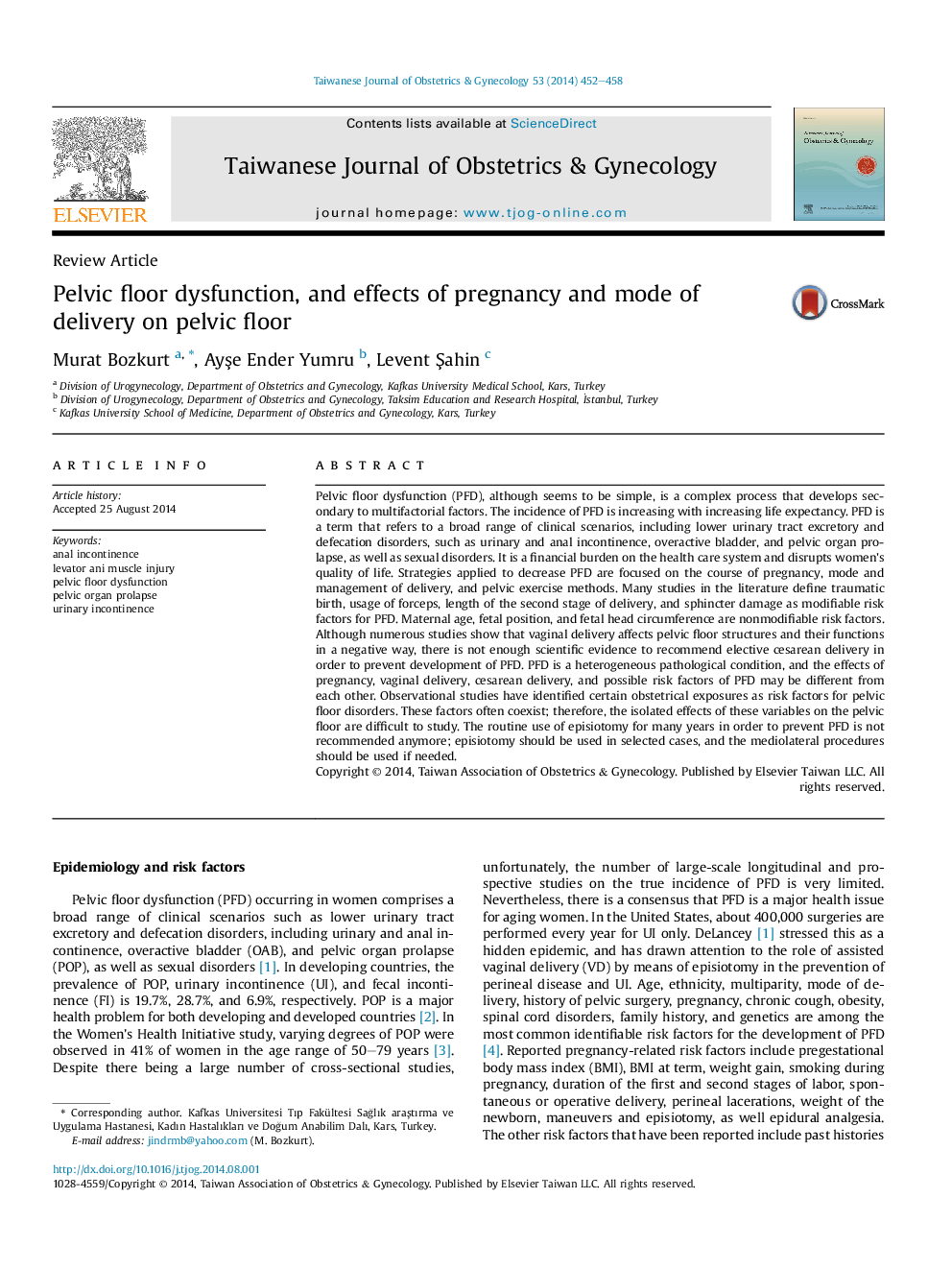| کد مقاله | کد نشریه | سال انتشار | مقاله انگلیسی | نسخه تمام متن |
|---|---|---|---|---|
| 3974937 | 1600975 | 2014 | 7 صفحه PDF | دانلود رایگان |
Pelvic floor dysfunction (PFD), although seems to be simple, is a complex process that develops secondary to multifactorial factors. The incidence of PFD is increasing with increasing life expectancy. PFD is a term that refers to a broad range of clinical scenarios, including lower urinary tract excretory and defecation disorders, such as urinary and anal incontinence, overactive bladder, and pelvic organ prolapse, as well as sexual disorders. It is a financial burden on the health care system and disrupts women's quality of life. Strategies applied to decrease PFD are focused on the course of pregnancy, mode and management of delivery, and pelvic exercise methods. Many studies in the literature define traumatic birth, usage of forceps, length of the second stage of delivery, and sphincter damage as modifiable risk factors for PFD. Maternal age, fetal position, and fetal head circumference are nonmodifiable risk factors. Although numerous studies show that vaginal delivery affects pelvic floor structures and their functions in a negative way, there is not enough scientific evidence to recommend elective cesarean delivery in order to prevent development of PFD. PFD is a heterogeneous pathological condition, and the effects of pregnancy, vaginal delivery, cesarean delivery, and possible risk factors of PFD may be different from each other. Observational studies have identified certain obstetrical exposures as risk factors for pelvic floor disorders. These factors often coexist; therefore, the isolated effects of these variables on the pelvic floor are difficult to study. The routine use of episiotomy for many years in order to prevent PFD is not recommended anymore; episiotomy should be used in selected cases, and the mediolateral procedures should be used if needed.
Journal: Taiwanese Journal of Obstetrics and Gynecology - Volume 53, Issue 4, December 2014, Pages 452–458
